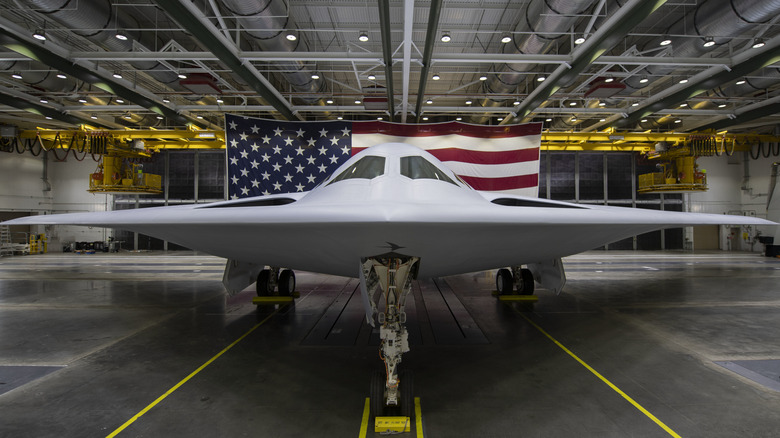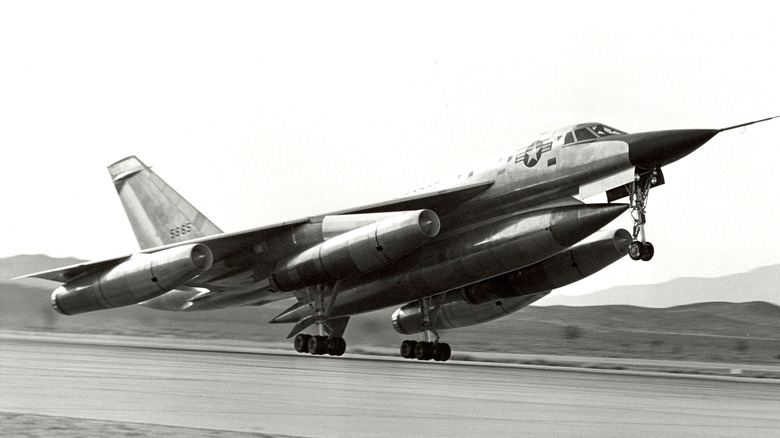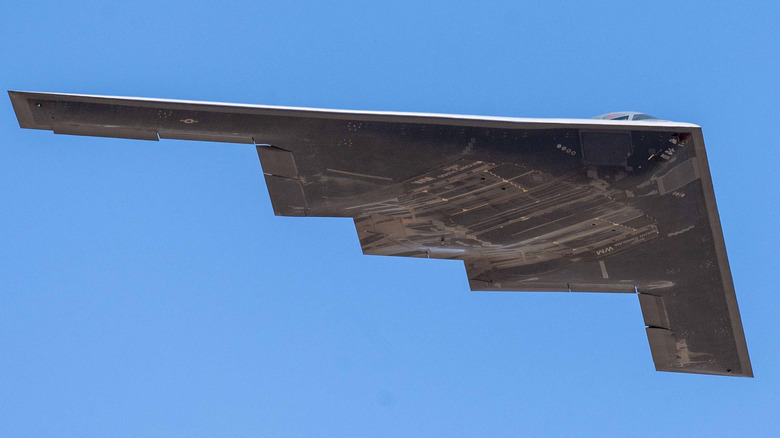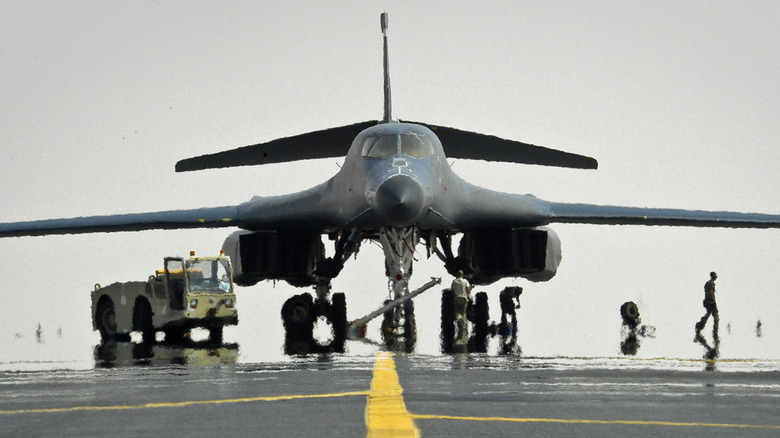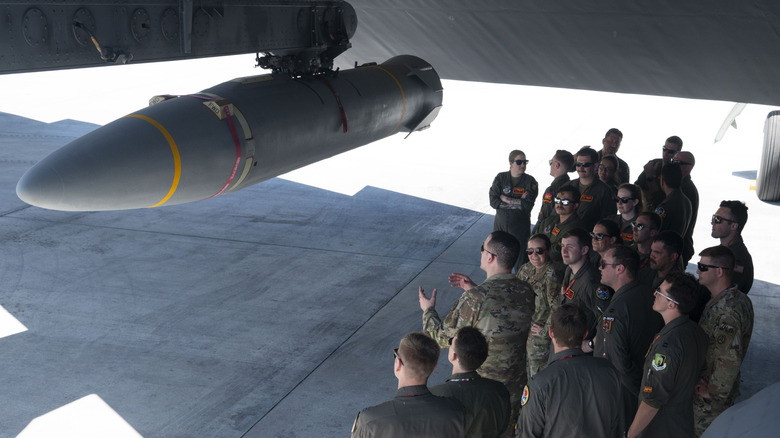Why Isn't There A Mach 2 Bomber Jet In The U.S. Air Force?
The U.S. Air Force once had bombers that could reach Mach 2 or more, including the world's first in this class, the B-58, which pushed the limits of supersonic aviation. One of the most impressive supersonic bombers of all time, it was in service from 1960 through 1970. The B-58 was followed by the swing-wing FB-111A, which could hit Mach 2.15, from 1968 through 1991.
The FB-111A was replaced by the slower B-1B, which is still in service. It has been joined by the B-2, which first came online in 1993, and Northrop Grumman's B-21 Raider, currently under development. Both of these are subsonic.
The U.S. Air Force is unlikely to field another crewed Mach 2 bomber. Recent experience shows that without stealth, strategic bombers are not likely to be flying over near-peer adversaries. Russia's use of strategic bombers over Syria versus their absence over Ukraine since the broad-scale invasion of February 2022 points to this reality.
Even before the Russian invasion of Ukraine, the U.S. Air Force had no plans for a new supersonic bomber. The B-21 has a specification for 0.8 Mach, or about the same as the B-52. The debate over unpiloted 6th Generation fighters is underway, but the B-21, crewed or not, indicates a slow future for bombers.
A SAM-soaked environment
When the Air Force put the B-58 Hustler on the flight line in 1960, Chinese and Soviet surface-to-air missiles, or SAMs, were waiting. The SA-2A Guideline SAM, first deployed in 1959 and with two kills under its belt by then, could already target and shoot down planes that flew as high as the B-58's service ceiling. The response was to change from high-and-fast bombing runs to low-and-fast, and the B-58 was subsonic at low altitudes. It was never used in combat.
The B-58's replacement, the FB-111A, was designed to jam enemy signals and featured terrain-following radar for low-altitude missions. Since then, anti-aircraft missiles have become increasingly sophisticated and longer in range. In April 2024, Ukraine claimed that a 1960s-designed Russian Tupolev Tu-22M3 strategic bomber was downed by a heavily modified formerly Soviet S-200 from the '60s while flying near Stavropol, over 200 miles behind the Russian border. It wasn't a fluke — the Ukrainians had said a few weeks beforehand that they downed a Russian A-50 radar plane with a similar missile.
While Russia faced little SAM threat in Syria and flew with impunity, the example of its offensive against Ukraine shows that strategic bombers designed without stealth in mind have to become missile launchers from very far away, or else stay very low.
Trading speed for stealth
As radar technology improved, the emphasis in bomber design changed from top speed to reducing the planes' radar cross section. The B-1 Lancer program started in the 1970s as a Mach 2 strategic bomber. It fell to budget cuts in 1977, but re-emerged in the 1980s as a stealthier low-level bomber. Redesigning the B-1 to make it less visible to radar involved changing the air inlets, which dropped the maximum speed to Mach 1.25. The trade-off was significant — these changes helped drop its radar cross section by a factor of 10.
It is possible to have both stealth and speed, at least to a degree. The F-22 Raptor reaches Mach 2.25 and has a radar return at some frequencies equal to a metal marble. However, it can carry only 2,000 pounds of bombs internally. The B-2 Spirit, one of America's best stealth bombers, is a subsonic aircraft, but it carries 40,000 pounds of bombs inside over 6,000 miles.
Bombers are expensive
Building bombers is expensive, and missiles can take on some missions for less money. The XB-70 project was the first to feel the ax because of this.
The XB-70 was designed in the 1950s to have been a Mach 3 bomber, but the development of the intercontinental ballistic missile led President Dwight D. Eisenhower to cancel the bomber. President John F. Kennedy resurrected the project in the early 1960s, but only to produce two aircraft for collecting data on high speed flight.
Funding the B-1's development the following decade was contentious, and the B-2 cost $1.157 billion per tail in 1998 dollars ($2.24 billion today). As a result, attention to costs on the new B-21's development has been intense, and its manufacturer, Northrop Grumman, points out that the first of the new bombers was delivered under budget. Still, bombers are expensive, take a comparatively long time to design and roll out, and the B-21, as with the XB-70 before it, likely to be outdated before the production run ends.
Mach 2 is slow now
The U.S. Air Force and others worldwide are currently emphasizing the need for strategic bombers to have standoff launch capability — the ability to attack from a long distance. The B-2 can carry up to 24 1,000-pound AGM-158 Joint Air to Surface Standoff missiles, which will hit targets up to 200 miles away.
The next step in strategic attack delivered at Mach 2 or more is the hypersonic missile, able to achieve Mach 5 or higher. Such missiles are under development in the U.S. and several other countries, including North Korea and China. Russia regularly fields against Ukraine its Kinzhal air-launched missile, which has hypersonic cruise. The world's first surface-launched missile to be fired in anger, the Oreshnik, was used against Kyiv in November 2024.
The combination of missiles' high speed and lower cost with airplanes' vulnerability ensures that the need for a Mach 2 bomber is over. The next question is whether the cockpit is also about to become a thing of the past. The B-21 is already wired for both crewed and uncrewed operation.
